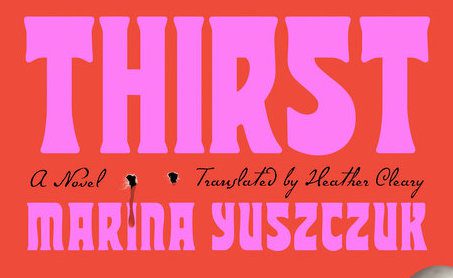At some point during my time on Goodreads, I created a shelf called “tragic hair-brushing” for a certain kind of Gothic novel, the kind that likely has a sylph-like female character who haunts her habitation wearing diaphanous dresses. The first book to go on the list was Flowers in the Attic. I’m making a little fun, but also I love this so much; it’s an affectionate teasing. Thirst by Marina Yuszczuk is definitely a tragic hair-brushing book.
The opening epigraph is a quote from The Bloody Countess: The Atrocities of Erzsebet Báthory by the surrealist poet Valentine Penrose, which details the depredations of Báthory not so much academically as emotionally. The old saw goes that a novel teaches you how to read it, and this epigraph definitely points to a rubric more psychosexual than historical. I’m a big believer that Gothic runs on vibes much more than other genres, so this is an auspicious opening.
Thirst almost feels like two novellas, both first-person accounts. The first is the story of our sylph-like vampire which begins with her origins in Europe somewhere and continues through to her emigration to Argentina and several decades of her life in Buenos Aires. This part of the story is very classic Gothic fiction, and the (largely) 19th century setting is complimented by prose that echoes contemporary Gothic stories.
There’s a long sequence during the last of the Yellow fever outbreaks that decimated Buenos Aires in 1971, which does an excellent job of invoking the stinking miasma of a city with no sanitation infrastructure and growing stacks of corpses who died vomiting black blood. I sort of apologize for the gooeyness of that description, but also if you don’t like that, you won’t like this book. Like many stories about the immortal, the vampire grows increasingly disconnected with a modernizing society, and she taps out of history in the early 20th century, retreating to a silk-lined coffin. Her hair, of course, continues to grow.
The second novella is set in contemporary Buenos Aires, and is also first person. Our narrator is classic sandwich generation. Her son is older than a toddler but not quite school age, which I know from experience is a time in your child’s life that feels very precarious: they’re capable enough to run out into the street, but not mature enough not to. Her mother is dying of something wasting — ALS, maybe, or MS — and I felt it in my bones the way each visit is also the last time her mother could do something basic like sit up, or talk, or smile, the way degenerative diseases close the doors on your agency until you are locked into a single, soundless space.
Our narrator’s dying mother gives her the key to the vampire’s mausoleum, handed down through the generations from one of the vampire’s familiars, for lack of a better word. But time has stripped the key of its meaning, so she ends up loosing the vampire without the understanding of what she’s doing. The vampire circles her for weeks, always just there, at the corner of the eye. Their relationship ends up being a strange, glancing, visceral thing, as quiet as her mother’s dying but also as furious.
I’m not sure I fully understand the ending, though I suspect that’s more that I finished reading today and haven’t had the requisite time to ruminate on the narrative as a whole. There’s a retrospective quality of both stories that makes me hungry for the parts of the story not told, the continuations and explications. It is fitting, in a way, for a novel called Thirst that the reader is never quite sated.
